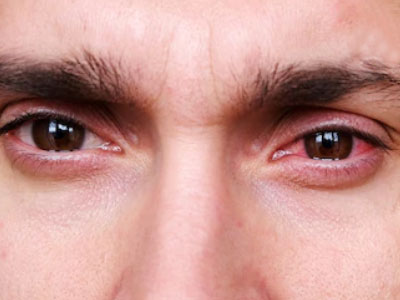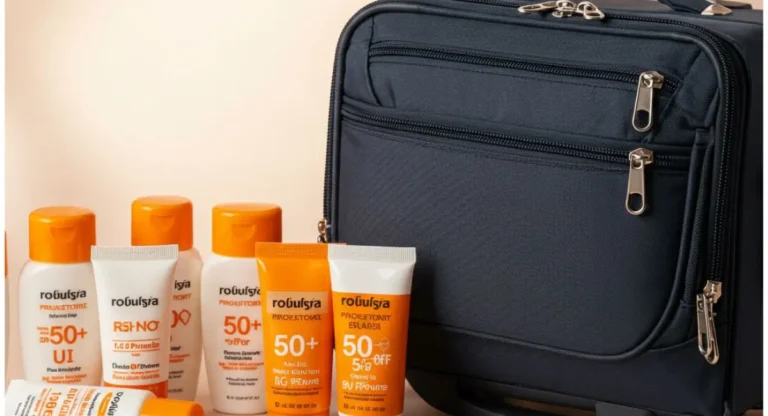Why Does Sunscreen Burn My Eyes? How to Prevent Irritation in 6 Actions
Have you ever applied sunscreen before a beach day, only to find yourself wincing in pain minutes later as your eyes start burning and you start wondering why does sunscreen burn my Eyes? You’re not alone. Studies show that nearly 64% of sunscreen users have experienced eye irritation at some point, making it one of the most common complaints about sun protection products. But why does sunscreen burn my eyes and yours at the first place, and more importantly, how can you prevent this uncomfortable reaction while still protecting your skin from harmful UV rays?
The burning sensation occurs for several specific reasons, from the chemical composition of many sunscreens to application techniques that accidentally introduce product to sensitive eye tissues. Understanding these factors is the first step toward enjoying sun protection without the tears.
In this comprehensive guide, we’ll explore the science behind why does sunscreen burns eyes, identify the most problematic ingredients, and provide practical solutions to help you stay protected without the pain. Whether you’re an outdoor enthusiast, a parent struggling to apply sunscreen to squirming children, or someone with particularly sensitive eyes, these evidence-based strategies will transform your sun protection routine.
Why Does Sunscreen Burn My Eyes? :The Science Behind Sunscreen Eye Irritation
Chemical vs. Physical Sunscreens: Understanding the Difference
Sunscreens generally fall into two categories, and this distinction plays a crucial role in understanding eye irritation:
Chemical sunscreens work by absorbing UV radiation and converting it into heat. These formulations typically contain active ingredients such as avobenzone, oxybenzone, octinoxate, and homosalate. While effective at UV protection, these compounds are more likely to cause eye irritation because they penetrate the skin’s surface and can migrate with sweat.
Physical (mineral) sunscreens function differently by creating a physical barrier that reflects and scatters UV rays away from the skin. They primarily contain zinc oxide and titanium dioxide. These ingredients typically remain on the skin’s surface rather than being absorbed, which generally makes them less likely to cause eye irritation.
Why Eye Tissue is Particularly Vulnerable
The eye area is approximately 10 times more sensitive than facial skin, with a corneal epithelium that’s only about 5-7 cell layers thick compared to the 15-20 layers found in regular skin. This sensitivity is compounded by several factors:
- The eye’s mucous membrane absorbs substances more readily than regular skin
- Tear ducts can transport sunscreen ingredients into the eye itself
- The pH of many chemical sunscreens (typically 5.5-7.0) differs from the eye’s natural pH (7.4), creating potential for irritation
- The eye area has fewer oil glands, reducing its natural protective barrier
Research published in the Journal of Ocular Pharmacology found that chemical UV filters can disrupt the tear film that protects the eye surface, temporarily compromising this natural defense mechanism.
Common Causes of Eye Burning from Sunscreen
Problematic Ingredients
Scientific data reveals certain sunscreen ingredients are particularly problematic for eye comfort:
- Chemical filters like avobenzone and oxybenzone are among the most frequent irritants, with studies showing they trigger reactions in up to 70% of people reporting eye discomfort.
- Alcohol-based ingredients including denatured alcohol and ethanol, which help products dry quickly but can be exceptionally irritating if they reach the eye tissue.
- Fragrances and preservatives such as parabens and formaldehyde-releasing compounds that manufacturers add to improve product appeal but often contribute to sensitivity reactions.
- Emulsifiers and solubilizers like polysorbate 20 and PEG compounds that help keep sunscreen formulations stable but can disrupt the eye’s protective tear film.
Application Issues That Lead to Eye Irritation
Even the gentlest formulation can cause problems when applied incorrectly:
- Over-application sunscreen around eyes: Research indicates that most people apply about 25% more sunscreen than necessary on the face, increasing migration risk.
- Sweat transport: During physical activity, sweat can carry sunscreen down from the forehead into the eyes.
- Accidental rubbing: Touching your eyes after applying sunscreen transfers the product directly to sensitive tissues.
- Water activities: Swimming can wash sunscreen from the face into the eyes, with chlorinated pools exacerbating irritation.
Environmental Factors That Worsen Irritation
External conditions can intensify the burning sensation:
- High humidity (above 65%) slows sunscreen absorption and increases migration
- Elevated temperatures accelerate sweat production by up to 40%, creating more opportunities for sunscreen to travel
- Windy conditions can cause particles to become airborne and enter the eyes
- Water exposure from swimming or water sports compounds irritation potential

Symptoms of Sunscreen Eye Irritation
Recognizing Reaction Patterns
When sunscreen makes contact with eye tissues, you may experience:
- Immediate burning sensation (reported by 83% of affected individuals)
- Redness and bloodshot appearance as capillaries dilate in response to irritants
- Excessive tearing as the eye attempts to flush out the foreign substance
- Temporary blurred vision due to disruption of the tear film
- Swelling of the eyelids in more severe cases or with allergic components
- Photosensitivity or increased light sensitivity until irritation subsides
Severity Scale of Reactions
Eye reactions to sunscreen typically fall into one of these categories:
Mild: Temporary stinging that resolves within 5-10 minutes with natural tearing Moderate: Pronounced burning, redness, and excessive tearing lasting 30+ minutes Severe: Intense pain, significant swelling, and potential allergic reaction requiring medical attention
When to Seek Medical Attention
While most sunscreen eye irritation resolves independently, consult a healthcare provider if you experience:
- Vision changes lasting more than a few hours
- Severe pain that doesn’t improve with eye rinsing
- Significant swelling of the eye or eyelid
- Discharge from the eye
- Symptoms that worsen rather than improve over time
- History of eye conditions or recent eye surgery
Ophthalmologists report that while temporary discomfort is common, permanent damage from sunscreen exposure is extremely rare, occurring in less than 0.1% of cases.
Why Does Sunscreen Burn My Eyes?: Prevention Strategies
Application Techniques to Avoid Eye Area
Implementing these evidence-based application methods can reduce irritation risk by up to 80%:
- Create a safety perimeter: Apply sunscreen around eyes or at least 1 inch away from the eye area, following the orbital bone as a natural boundary.
- Apply from bottom to top: Start application below the eyes, working upward to minimize product migration.
- Use the two-finger technique: Place your index and middle finger horizontally below your eye to create a physical barrier during application.
- Dab, don’t rub: Gentle patting motions around the eye area prevent excess product and minimize skin stretching.
- Allow absorption time: Wait 10-15 minutes after application before engaging in activities that cause sweating, giving the product time to set.
Strategic Product Selection
Choose sunscreens with these characteristics to minimize eye irritation:
- Mineral formulations containing zinc oxide and/or titanium dioxide
- Water-resistant labels (indicating better staying power during sweating)
- Fragrance-free options which eliminate a major irritant category
- Stick formulations for facial application, which tend to migrate less than liquids
- Products specifically labeled for sensitive skin or facial use

Alternative Eye Protection Methods
Supplement sunscreen with these physical barriers:
- UV-protective sunglasses that block 99-100% of UVA and UVB rays
- Wide-brimmed hats (4+ inches) that shade the face and eyes
- SPF-rated clothing with UPF 35+ protection
- Seek shade during peak sun hours (10 a.m. to 2 p.m.)
Mineral Sunscreen Advantages
Research confirms mineral sunscreens offer significant benefits for sensitive eyes:
- Stay-put formulations: Physical blockers remain on the skin’s surface rather than penetrating, reducing migration by approximately 60%
- Immediate protection: Unlike chemical filters that need 15-30 minutes to activate, mineral sunscreens work immediately upon application
- Stable protection: Less likely to break down under UV exposure, maintaining effectiveness longer
- Lower allergenicity: Associated with 75% fewer reported allergic reactions compared to chemical alternatives
- Colorescience Total Eye 3-in-1 Renewal Therapy SPF 35 is a solid option of mineral sunscreen that doesn’t burn eyes
Fragrance-Free Formulations
Dermatologists confirm that fragrances are among the top five contact allergens in skincare products:
- Unscented products reduce irritation potential by eliminating common synthetic fragrances
- Look for “fragrance-free” rather than “unscented” (which may still contain masking fragrances)
- Products labeled for sensitive skin typically omit fragrance components
Specialized Eye Area Products
These targeted solutions are formulated specifically to address eye area concerns:
- Mineral-based eye sticks applied precisely to the eye area, containing waxy ingredients that resist migration
- Tinted mineral sunscreens that double as light makeup and sunblock without irritating ingredients
- Ophthalmologist-tested formulations designed specifically for use around the eyes

What To Do If Sunscreen Gets In Your Eyes
Immediate First Aid Steps
If you experience sunscreen in your eyes, follow these evidence-based first aid protocols:
- Rinse thoroughly: Use clean, room-temperature water for at least 15 minutes, allowing it to flow from the inner corner (near the nose) outward.
- Use saline solution: If available, sterile saline solution is optimal for eye rinsing as its pH closely matches that of natural tears.
- Avoid rubbing: While tempting, rubbing can scratch the cornea and push irritants deeper into the eye.
- Remove contact lenses: If you wear contacts, remove them before rinsing to allow complete cleansing.
- Apply cold compress: After rinsing, a cool, clean washcloth placed gently on closed eyes can reduce inflammation.
Products to Relieve Irritation
These over-the-counter options can provide relief:
- Preservative-free artificial tears help flush residual irritants and restore comfort
- Refrigerated cucumber slices placed on closed eyes provide natural anti-inflammatory benefits
- Sterile eye wash solutions formulated specifically for eye irritation
- Cold milk compresses contain proteins that can help soothe irritated eye tissues
Recovery Timeline
Most people can expect this healing progression:
- Immediate relief: Initial burning typically subsides within 15-30 minutes of thorough rinsing
- Residual discomfort: Mild irritation may persist for 2-4 hours as the eye’s protective tear film restores itself
- Complete resolution: Full comfort typically returns within 24 hours for most individuals
Why Does Sunscreen Burn My Eyes?: Products and Tools for Precise Application
Application Accessories
These specialized tools can dramatically improve sunscreen application precision:
- Silicone application brushes allow controlled placement of sunscreen without finger contamination
- Eye shields/applicator guards physically block product from entering the eye area during application
- Roll-on applicators deliver measured amounts of product with minimal spread
- Precision tip tubes for targeted application in small areas
Specialized Products for the Eye Area
Look for these innovative solutions:
- Powder mineral sunscreens with built-in brush applicators for precise application
- Solid stick formulations that glide on without excess product migration
- Tinted eye area defenders that combine mineral protection with light coverage
- SPF-containing eye primers designed specifically for the delicate eye area
Application Tips for Different Scenarios
Adapt your approach based on activities:
Swimming/Water Sports:
- Apply waterproof formulations 30 minutes before water exposure
- Reapply every 40-80 minutes depending on water activity intensity
- Consider using swimming goggles for complete eye protection
High-Intensity Exercise:
- Use stick formulations less likely to migrate with sweat
- Apply a thin layer of powder mineral sunscreen as a final step to absorb excess moisture
- Wear a sweatband to prevent downward migration from forehead to eyes
Extended Outdoor Exposure:
- Layer protection with both physical barriers (hats, sunglasses) and sunscreen
- Choose thicker formulations with stronger staying power
- Create a “sunscreen barrier zone” around the eyes using stick mineral products
Special Considerations
Children and Sensitive Skin
Pediatric dermatologists recommend these adaptations for young skin:
- Stick exclusively to mineral formulations for children under 6 years old
- Consider infant/child-specific products with simpler ingredient lists
- Use physical barriers as primary protection whenever possible
- Apply sunscreen to your hands first, then to the child’s face for better control
- Teach older children proper application techniques early for lifelong habits
Contact Lens Wearers
If you wear contacts, follow these specialized tips:
- Insert lenses before applying sunscreen to avoid transfer of product
- Wait 10-15 minutes after insertion before applying facial sunscreen
- Consider daily disposable lenses during heavy sunscreen-use periods
- Carry lens solution and a case for emergency removal if irritation occurs
- Opt for UV-blocking contact lenses as an additional layer of protection
Those with Eye Conditions
People with existing eye issues should take extra precautions:
- Consult an ophthalmologist for specific product recommendations if you have conditions like dry eye syndrome, blepharitis, or recent LASIK surgery
- Test new products on a small facial area for 24 hours before full application
- Consider prescription-only options designed for post-surgical or sensitive eyes
- Maintain stricter adherence to physical protection methods like quality sunglasses and hats
Why Does Sunscreen Burn My Eyes?: Conclusion
Understanding why sunscreen burns your eyes is the first step toward preventing this uncomfortable issue. The culprits are often chemical filters, fragrances, and application techniques that allow products to migrate into sensitive eye tissues. By switching to mineral-based formulations, using precise application methods, and supplementing with physical protection like sunglasses and hats, you can maintain crucial sun protection without the eye irritation.
Remember that protecting your skin from harmful UV rays remains essential for preventing skin cancer and premature aging. The solution isn’t to abandon sunscreen altogether but to find the right products and techniques that work for your unique sensitivity level.
We encourage you to experiment with the recommendations in this guide and find your perfect eye-friendly sun protection routine. Have you discovered a particular product or technique that works exceptionally well for preventing sunscreen eye irritation? Share your experiences in the comments below! Subscribe to our newsletter for more skincare tips and solutions for common beauty challenges.
Why Does Sunscreen Burn My Eyes?:FAQs
Why does sunscreen burn my eyes but not my skin?
Your eye tissue is approximately 10 times more sensitive than facial skin, with fewer protective layers and a different pH level. The mucous membrane of the eye absorbs substances more readily than regular skin, making irritants in sunscreen formulations more noticeable when they reach this area.
Are mineral sunscreens less likely to cause eye burning?
Yes, mineral (physical) sunscreens containing zinc oxide and titanium dioxide typically cause less eye irritation because they remain on the skin’s surface rather than being absorbed. This makes them less likely to migrate into the eyes with sweat or water.
Can I become immune to sunscreen eye irritation over time?
No, you cannot develop immunity to chemical irritants in sunscreen. In fact, repeated exposure may lead to increased sensitivity through a process called sensitization. Finding appropriate products rather than trying to “tough it out” is the better approach.
Is it safe to apply sunscreen around eyes or on eyelids?
Most regular sunscreens are not formulated for direct eyelid application. Instead, use products specifically designed for the eye area, mineral stick formulations, or rely on UV-blocking sunglasses and hats to protect this delicate region.
How can I remove sunscreen that’s already burning my eyes?
Flush your eyes thoroughly with clean, room-temperature water or saline solution for at least 15 minutes, allowing it to flow from the inner corner outward. Avoid rubbing your eyes, as this can worsen irritation and potentially scratch the cornea.
Do more expensive sunscreens cause less eye irritation?
Price doesn’t necessarily correlate with eye comfort. Instead, look for mineral ingredients, fragrance-free formulations, and products labeled for sensitive skin or facial use, regardless of price point.
Can eye drops prevent sunscreen irritation?
Using artificial tears before sunscreen application doesn’t prevent irritation, but keeping preservative-free artificial tears on hand can help flush out irritants if exposure occurs. They’re a treatment, not a preventative measure.
Is sunscreen eye irritation the same as an allergic reaction?
No. Most sunscreen eye discomfort is an irritant reaction (direct tissue irritation) rather than a true allergic response (immune system involvement). Allergic reactions typically involve additional symptoms like hives, widespread redness, or swelling beyond the application area.





